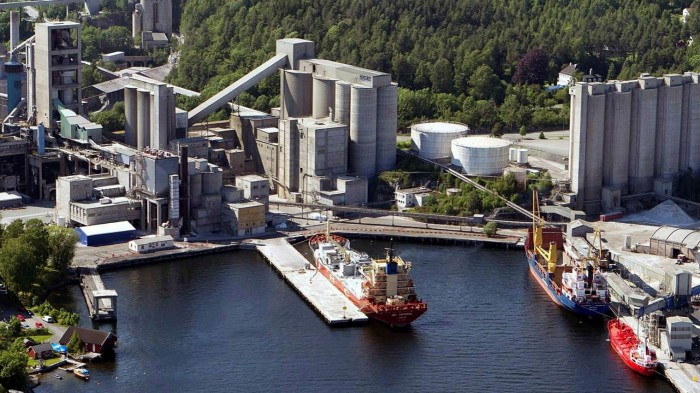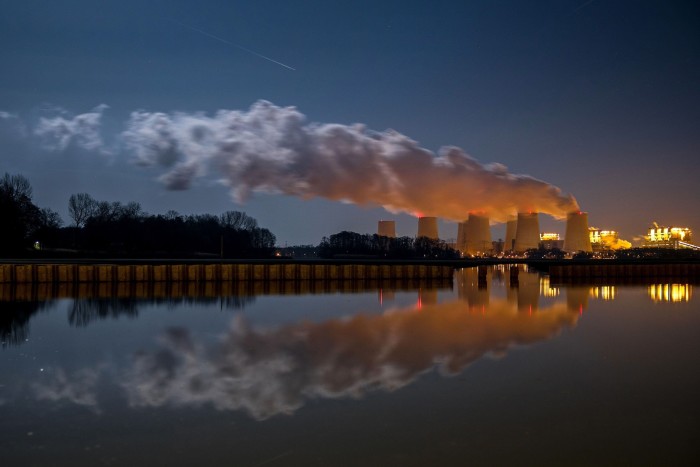Norway’s Viking ‘Longship’ goes after greenhouse gas emissions

Roula Khalaf, Editor of the FT, selects her favourite stories in this weekly newsletter.
A decade ago, Norway’s first attempt to capture and store carbon dioxide — grandiosely known as the country’s “moon landing” — was abandoned with huge cost overruns.
Now, as concern about global warming grows, the Scandinavian country is revisiting the scheme. This time it is trying to cut greenhouse gas emissions with a NKr25bn ($3bn) carbon capture and storage (CCS) plan dubbed “Longship”, after the Viking boats.
The costly flagship project is crucial for western Europe’s largest petroleum producer as it aims to find ways of cutting emissions and keeping its economically important heavy industry alive, officials and analysts say. If successful, it could be replicated elsewhere in Europe.
“Norway has been working up to this for decades. They see this as one of their big offers to the world,” said Stuart Haszeldine, professor of CCS at the University of Edinburgh.
Ben van Beurden, Shell’s chief executive, said it was hard to “overstate how critical” Norway’s support was for CCS. “It puts Norway at the forefront of something that will only increase in importance,” he added.
But there are also risks involved. The country’s first attempt at CCS “was a catastrophe”, according to Per Brevik, head of sustainability in northern Europe for HeidelbergCement. Its focus on coal and gas-powered electricity plants proved redundant as they could just as easily switch to renewable energy, said Mr Haszeldine.
This time round, in an effort to avoid the “moon landing” mistakes, CCS is focused on industries such as cement, glass, paper and fertiliser that emit large amounts of carbon dioxide in their production processes.
Cement accounts for about 6-8 per cent of global emissions but only one-third of that is related to energy. The rest is as a result of the calcination process in which limestone is crushed and burnt, and there is currently no viable alternative.
“This can be a success story for Norwegian technology and business,” Prime Minister Erna Solberg told the Financial Times. “It can also be an example that Norway tried but nobody followed,” she added, speaking at a Norcem cement plant in the seaside town of Brevik, owned by Germany’s HeidelbergCement, which is to be the pilot for the Longship scheme.
Norway’s government will cover about four-fifths of the costs of the pilot CCS project in Brevik and provide most of the NKr3.3bn needed to build a carbon capture plant there by 2024. Norway could also help finance a second project at a waste incineration plant but — in an effort to learn the lessons from “moon landing” and share the risk of the project — only if the EU also invests.
As part of Longship, Norway is also backing Northern Lights — an initiative by oil companies Equinor, Total, and Royal Dutch Shell — to transport and store carbon dioxide beneath the seabed of the North Sea from projects such as Longship. Other companies will also be able to use the storage, in what Mr Haszeldine said would be the first commercial use of CCS as a service.
CCS offered Norway “new industrial possibilities” by both using its drilling expertise to offer carbon storage in the North Sea and potentially allowing natural gas to be used to produce hydrogen, “meaning that some of our natural resources will live longer”, Ms Solberg added.
But it will take time for it to become profitable and critics worry about the rise in carbon taxes needed to fund the Longship project.
Norway said on Friday its carbon taxes would more than treble for non-oil companies by 2030 as part of its efforts to cut its emissions by a half from their 1990 levels by the end of this decade.
The debate over the costs reflects how Norway has long struggled to reconcile its role as a big petroleum producer with its image as a country taking bold action on climate change. It recently opened its largest oilfield in decades and issued a record number of exploration licences in the Arctic, even as its generous support lifted electric car sales last year to more than half of all new vehicles, a world record.
“It is something of a Norwegian paradox — we are certainly one of the biggest petroleum exporters in Europe. At the same time we are doing almost everything we can to undermine demand for our own product,” said Sveinung Rotevatn, Norway’s environment minister.
For now, there is optimism about what the future can hold. Ms Solberg stressed that Longship was not just about one project but maturing the technology, with the hope that HeidelbergCement and other companies will use it elsewhere too.
“That means there’s a stronger case for saying this will not be a symbolic project, that we will have a sequel,” she added.
Climate Capital

Where climate change meets business, markets and politics. Explore the FT’s coverage here
Comments